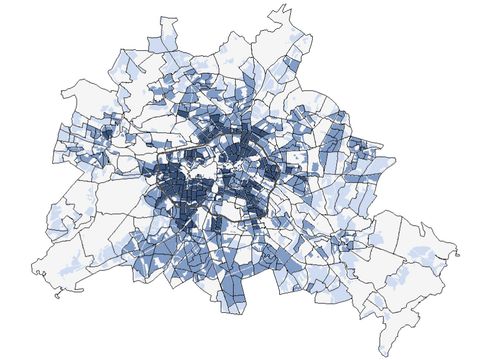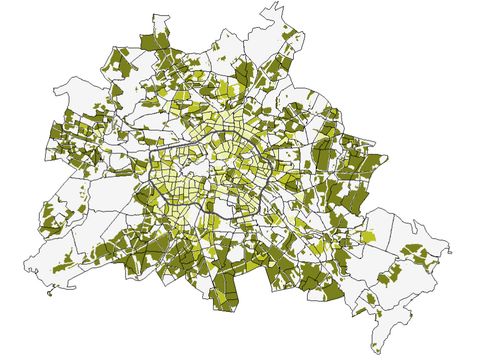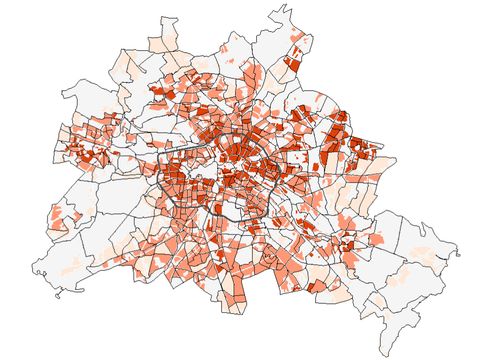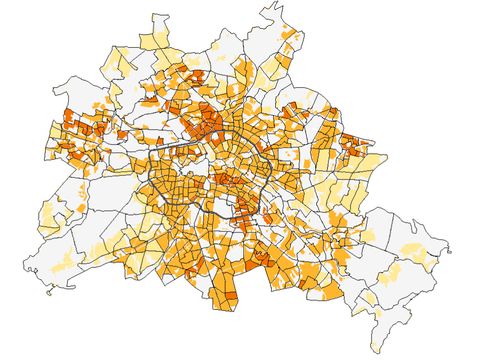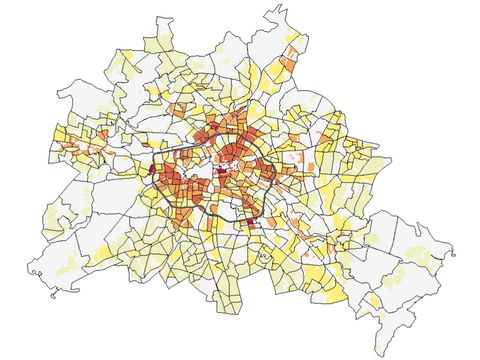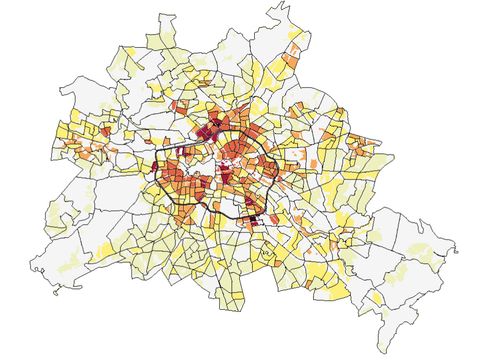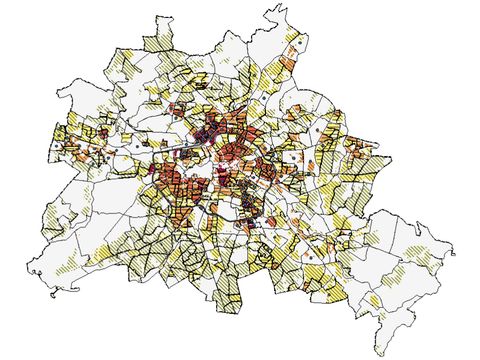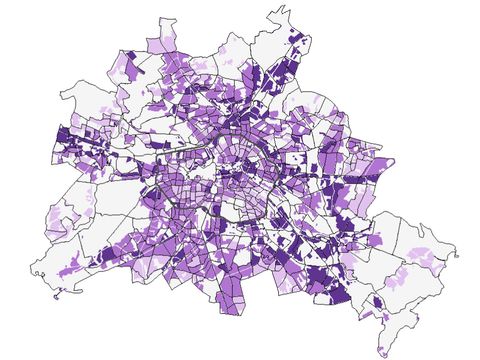
Image: Umweltatlas Berlin
09.01.1 Noise Burden 2021/2022
The total noise map (night) was chosen from the set of evaluations of the 2017 Strategic Noise Maps as a starting point for determining the intensity of the burden of core indicator 1 of Berlin’s approach to environmental justice. The distribution indicates that the noise burden is highly impacted by main roads and main railway lines. 09.01.1 Noise Burden 2021/2022

